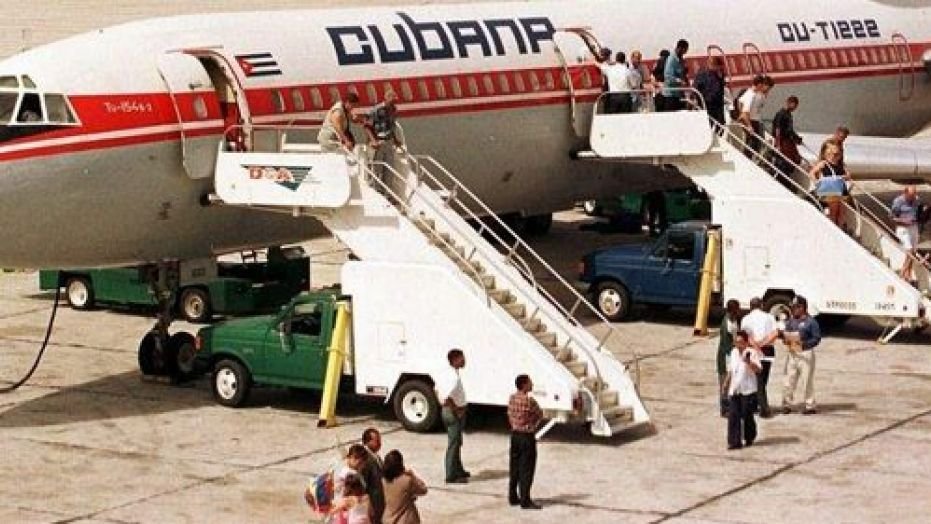The US anti-missile system intended to circumnavigate the potential danger of North Korea’s missiles will soon be functional, according to both US and South Korean defense officials.
US Pacific Command Chief Admiral Harry Harris told the House Armed Services Committee this Wednesday that the Terminal High Altitude Area Defense (THAAD) missile defense system was projected to be “operational in the coming days to be able to better defend South Korea against the growing North Korea threat.”
The South Korean Defense Ministry maintains that components of the system have already been transported to the planned deployment location.
THAAD was deployed to South Korea by the US as a reaction to North Korea’s higher quantity of missile and nuclear tests. However, the defense system has received acute backlash from China and Russia, who both perceive it as a possible neutralizer of their own nuclear deterrents.
Despite the fact that the initial aim was to have the entire system fully functional by the end of this year, the US and South Korea have openly emphasized the urgency of the matter and the consequent need to speed up the deployment of the technological development as tensions with Pyongyang have consistently escalated.
“Currently, the basic goal is to promote the full operational capability of one turret by the end of this year,” South Korean Defense Ministry spokesman Moon Sang-kyun explained at a briefing on the matter.
He stated that equipment—including launchers, combat control stations, and radar—had already been deployed to the chosen site in the North Gyeongsang province and that they would be operational in a short matter of time.
“These things are now in place, so you can connect them to get the operational capability from early on—that’s what ‘within days’ means.”
He continued further to clarify that the present deployment did not constitute a “pilot operation” for the full rollout of the missile system, but is “capable of actual reaction to North Korea’s provocation.”
South Korean presidential candidate Moon Jae-in, who is projected to emerge as the victor of the nation’s May 9th election, has pleaded for the deployment to be temporarily ceased until the election has been finalized.
Harris opined that it was “preposterous” that China would employ financial measures in an attempt to prevent South Korea from receiving a defensive system, which the US ensures does not in any way pose a threat to Beijing.
He added that China seems to be working towards the goal of containing and restricting North Korea, as Trump has pressured his Chinese counterpart to do.
“I’m reasonably optimistic now that China is having an influence, and they are working in the right direction with regards to North Korea thanks to the efforts of our president and theirs,” Harris stated.
The Pacific commander declared that he was taking Kim Jong Un at his word regarding the statements by the North Korean leader that implied that he was set on the development of a long-range nuclear missile that could strike the US and that this should “provide us all a sense of urgency” to guarantee that US forces in the Pacific are ready for the possibility of such.
He advocated that providing “credible combat power” is the best method to decrease the rising tensions on the Korean Peninsula.
“We want to bring Kim Jong Un to his senses, not to his knees,” Harris proclaimed.
The Pacific commander mentioned the USS Carl Vinson carrier strike group deployment to the northeastern region of Asia as such a deterrent against North Korea’s ever-increasing threats, revealing that it was now located in the Philippine Sea and “in strike range and power projection range of North Korea if called upon to do that.”
The USS Carl Vinson is traveling north after prior confusion that occurred earlier this month regarding the whereabouts of the carrier, a misunderstanding Harris quickly assumed responsibility for.
“That’s my fault on the confusion, and I’ll take the hit for it,” Harris admitted to the panel.
He clarified that it was his decision “to pull the Carl Vinson out of Singapore, truncate the exercise it was going to do south of Singapore, cancel its port visit to Australia and then proceed north.”
He continued on to say that, “Where I failed was to communicate that adequately to the press and the media. So that is all on me.” Harris did not address what, if any, communications took place with the White House.
As another restrictive measure, Harris underlined the USS Michigan, which is a guided-missile submarine, that arrived in South Korea this past Tuesday. He emphasized that it functioned as a vital sign of strength.
“We have a lot of preemptive options,” Harris revealed.
However, Harris has also openly divulged his command’s unsatisfied needs. He revealed that he had merely 50% of the submarines he requested for the region. “We need more submarines,” he declared frankly, and then Harris continued on to exclaim that he recognized a need for additional interceptors deployed in California and Alaska to protect against potential North Korean missiles.
He also admitted that he would be intent on deploying missile-defense radars to Hawaii, as well as possibly missile interceptors, with the intention of increasing the ability to preemptively improve the defense of the islands from North Korea’s missiles.
Harris’ testimony comes prior to two congressional briefings on North Korea that is set to take place Wednesday afternoon, in which Defense Secretary James Mattis, Joint Chiefs Chairman Gen. Joe Dunford, Secretary of State Rex Tillerson and Director of National Intelligence Dan Coats intent to brief the full House and Senate on the matter.
Senators are headed to the White House for this briefing, where Trump may potentially appear and partake.
Although the briefings are being held in a confidential location, House Armed Services Chairman Mac Thornberry of Texas emphasized that Harris’ testimony was vital for the reassurance of the public regarding the issue.
“I think the public is nervous, and they need to know that we have the military capability to prevail should a conflict come,” Thornberry explained prior to the hearing.
Harris is testifying in three congressional hearings that are set to take place this week, but he’s doing so without General Vincent Brooks, who is the head of US Forces Korea and was supposed to testify but is currently still in the Pacific because of the escalating tensions in the region.
Featured Image via Wikimedia.










































